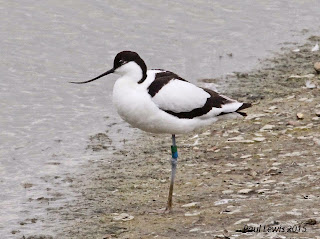A late morning visit in sunny, mild conditions provided the following species:-
Great Cormorant, Little Egret, Grey Heron, Mute Swan, Black Swan (1), Canada Goose, Fulvous Whistling Duck (1), Common Shelduck, Gadwall, Mallard, Northern Shoveler, Common Buzzard, Common Kestrel, Common Pheasant, Water Rail (heard), Common Moorhen, Eurasian Coot, Eurasian Oystercatcher, Pied Avocet, Northern Lapwing, Black-tailed Godwit (95), Common Redshank, Common Greenshank, Ruddy Turnstone, Greater Yellowlegs (1), Black-headed Gull, Herring Gull, Common Tern, Woodpigeon, Collared Dove, Common Swift, Common Cuckoo (male and female), Great Spotted Woodpecker, Barn Swallow, Wren, European Robin, Common Blackbird, Song Thrush, Cetti's Warbler, Sedge Warbler, Common Reed Warbler, Common Whitethroat, Blackcap, Common Chiffchaff, Goldcrest, Blue Tit, Great Tit, Eurasian Jay, Common Magpie, Carrion Crow, Common Starling, House Sparrow, Common Chaffinch, European Greenfinch, Common Linnet, Common Reed Bunting.
From Suffern Hide a wonderful Greater Yellowlegs showed well as it fed on the muddy bank of the River Meon with Black-tailed Godwit. This American vagrant showed characteristics of a first summer bird as it's legs were not as yellow as I would expect on an adult in full breeding plumage. I have seen this species in the Caribbean but never in the British Isles. A few record shots of the bird follow:-
Greater Yellowleags (bottom right) with Black-tailed Godwit.
From Meadow Hide a male and female Common Cuckoo showed for several minutes, the female bird sporting rustic brown plumage. On the south scrape dozens of Pied Avocet were noted with at least one pair present with young, the Meon Hide giving fantastic views. An escaped Fulvous Whistling Duck sporting adult plumage was also present and remained just long enough for me to take a record shot.
From Spurgin Hide a Northern Lapwing was noted showing nervous behaviour among the long grass and probably had young nearby.









No comments:
Post a Comment